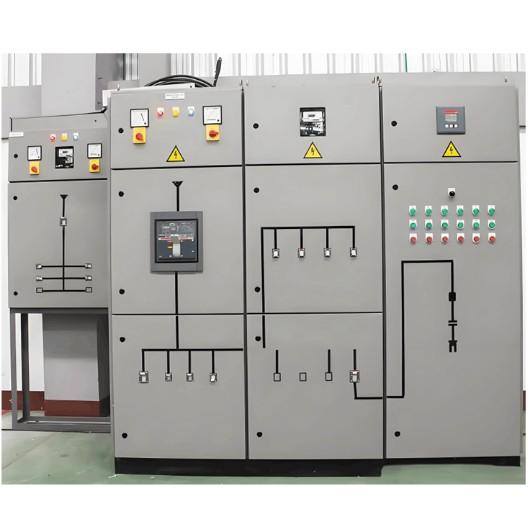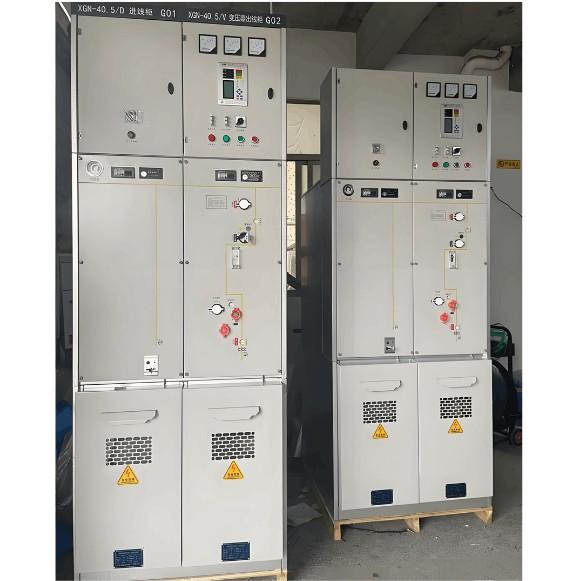I. Tattalin Noma
1.1 Tsawon Noma
An karkashin tsari mai girma suna da sauran karkashin tsari mai rufe, tunan kuma an karkashin tsari daga tsafta da sauran karkashin tsari daga tsafta, saboda hanyar yadda ake gudana. A cikin noma, ya kamata a duba sararin amfani da tsari da kuma sararin amfani da tsari.
Idan sararin amfani da tsari yana fito da yadda ake bayyana, zai iya haɗa shi a kan insulatorin tsari mai girma. Yadda ake haɗa shi ya na biyu da sararin amfani da tsari, kuma yana taka muhimmanci sosai wajen tabbatar da cewa babban al'adu ba ta yi wahala ba. Tushen noma a baya suna neman cewa lama tsari yana da take 70°C. Saboda ba ake samun sadarwa masu kasa don kiyaye tsari, amfani da karkashin tsari yana da takamfi. Amma, za a iya amfani da shi a wasu yanayi:
Tambayata da kada ko koyar da kalmomin tsari mai girma da kuma kalmomin tsari mai girma
Tambayata da kada ko koyar da amfani da tsari mai girma a kan 220kV ko kadan, da ido daga mafi girman abubuwan lafiya;
Koyar da kada ko koyar da kalmomin tsari mai girma na transformer da ba ake faruwa;
Koyar da kada ko koyar da amfani da tsari mai girma na lead wires da sararin amfani da tsari yake 5A, da kuma koyar da amfani da tsari mai girma na transformers da ba suka amfani da shi a cikin 2A;
Koyar da kada ko koyar da amfani da tsari mai girma na busbar loop currents, da ido daga mafi girman abubuwan lafiya;
Koyar da kada ko koyar da amfani da tsari mai girma na equipotential loop currents a kan 220kV ko kadan. Amma, ya kamata a yi takamfito da yadda ake haɗa shi cewa ba ake koyar da circuit breakers a kan loop ba.
1.2 Abubuwan Da Ya Dace A Cikin Noma
Ba a yi noma isolator a cikin amfani (ya'ni, ba a yi noma isolator a lokacin da aka amfani da shi);
Haɗa shi cewa ba a yi noma grounding switch a cikin amfani;
Yana nufin ba a yi noma fault currents ko koyar da amfani da shi a cikin amfani.
Idan akwai yanayin noma isolator a cikin amfani, mafi noma ya kamata a yi kawo alama a kan kofin noma don kiyaye tsari. Idan koyar da isolator, ya kamata a duba cewa kontrol power na circuit breaker ya fi sani. Ba a yi noma isolator har zuwa inda ake koyar da circuit breaker, a koyar da grounding switch, a koyar da grounding wires, da kuma inda ake koyar da circuit breaker.
A lokacin da ake amfani da shi, ya kamata a yi noma isolator na busbar-side kafin, sannan isolator na load-side. A lokacin da ake koyar da shi, ya kamata a yi kawo alama a kan kofin noma. Don hana amanna, ya kamata a yi noma ta hanyar remote operation. Idan remote electric control ya yi nasara, ya kamata a yi noma ta hanyar local electric operation. Idan duk waɗannan suka yi nasara, za a iya yi noma ta hanyar manual operation, ba a yi kawo alama a kan kofin noma da kuma samun ido daga mafi girman abubuwan lafiya.
A cikin noma, ya kamata a duba sound of the traditional mechanism don abin da ke da shi, da kuma a duba cewa full stroke an koyar da shi. Kuma, ya kamata a duba cewa dukkan uku na phases su ka yi noma synchronously, da kuma a duba cewa ake koyar da shi a kan kofin noma.
A lokacin da ake yi noma isolator, ya kamata a kafa gloves mai insulation. A lokacin ranar jiki, ya kamata a yi amfani da insulated rods da rain shields, da kuma a kafa boots mai insulation. Noma ta hanyar manual ya kamata a yi koyar da shi, amma ya kamata a haɗa shi cewa ba a yi impact mai yawa a kan kofin noma. Ba a yi noma ta har zuwa inda ake koyar da shi, ya kamata a duba cewa contact surface ta fi dace. A lokacin da ake koyar da shi, ya kamata a yi acceleration ta hanyar arc extinction a lokacin da blade ta separate from the contact. Ba a koyar da shi, ya kamata a duba cewa separation angle ta fi dace.
II. Tattalin Ingantaccen Kudin
Isolator primarily consists of the following components: transmission mechanism, insulation section, support base, operating mechanism, and conductive parts. The operating mechanisms are categorized into power-driven and manual types. Power-driven mechanisms include pneumatic, hydraulic, and electric types. Maintenance of disconnect switches should address both primary and secondary systems. Specific maintenance procedures are as follows:
2.1 Primary System Maintenance
First, inspect the external appearance:
Check whether the knife switch joints make tight and good contact;
Assess for severe burning or bending;
After opening the switch, use a telescope to observe contacts for oxidation, discoloration, deformation, or burn marks;
Check if porcelain insulators are clean and free from cracking, corona discharge, or audible discharges;
Inspect flange grounding for cracks;
Examine screws for rust or looseness;
Verify proper positioning of the grounding switch;
Confirm secure connection of grounding down conductors;
Ensure mechanical interlocks are intact;
Check transmission mechanisms for bending;
Inspect components for rust, loosening, or detachment.
Lubricate the transmission mechanism regularly and apply industrial-grade grease to friction points periodically.
Second, closely monitor operating current and voltage. During peak load periods, measure temperature to ensure it remains within acceptable limits.
Third, perform special inspections under abnormal conditions:
In extreme weather such as typhoons, check for loose connections, broken strands, poor contact, or strand scattering at terminal joints;
Look for foreign objects on the switch;
In rainy or foggy conditions, inspect porcelain insulators for flashover, discharge, or corona;
After a fault trip, check the switch position and look for signs of overheating at contacts, component deformation, or overheated terminal joints.
2.2 Secondary System Maintenance
When maintaining the secondary system:
First, verify the correctness of secondary wiring diagrams and confirm compliance with design requirements. Check for missing components, design flaws, or unimplemented local modifications. Assess whether motor protection and interlocking functions are necessary.
Second, conduct an on-site verification against the drawings. Record and report any discrepancies. These two steps are fundamental and critical.
Third, perform maintenance per standards:
Confirm that the "five-prevention" (5P) interlock system is properly implemented;
Ensure the control power and motor power for the isolator remain disconnected during operation;
Maintain appropriate voltage levels;
Ensure reliable contact for terminals, especially frequently used ones;
Inspect fuses and circuit protection devices for integrity;
Check the functionality of open/close buttons and switches.
Any issues identified during maintenance should be addressed immediately if possible; otherwise, record them for future resolution. Operators must follow established procedures to perform regular inspections, dynamic maintenance, and condition monitoring to predict equipment status and enable scientific, proactive maintenance.
Additionally, enhance technical training for maintenance personnel to develop multi-skilled expertise, ensuring timely detection and resolution of potential defects, thereby reducing unplanned outages. Invest in technological research—such as applying new materials or automated live cleaning of porcelain insulators—to further reduce the likelihood of switch failures.
III. Conclusion
Disconnect switches are commonly seen in power system operations. Although their structure is relatively simple, their operational performance and maintenance practices involve considerable expertise. Any failure in a disconnect switch can significantly impact the stable operation of the entire power system. Therefore, it is essential to establish favorable operating conditions based on actual site conditions, implement scientific and rational maintenance strategies, and lay a solid foundation for maximizing the functional reliability of these critical devices.






















